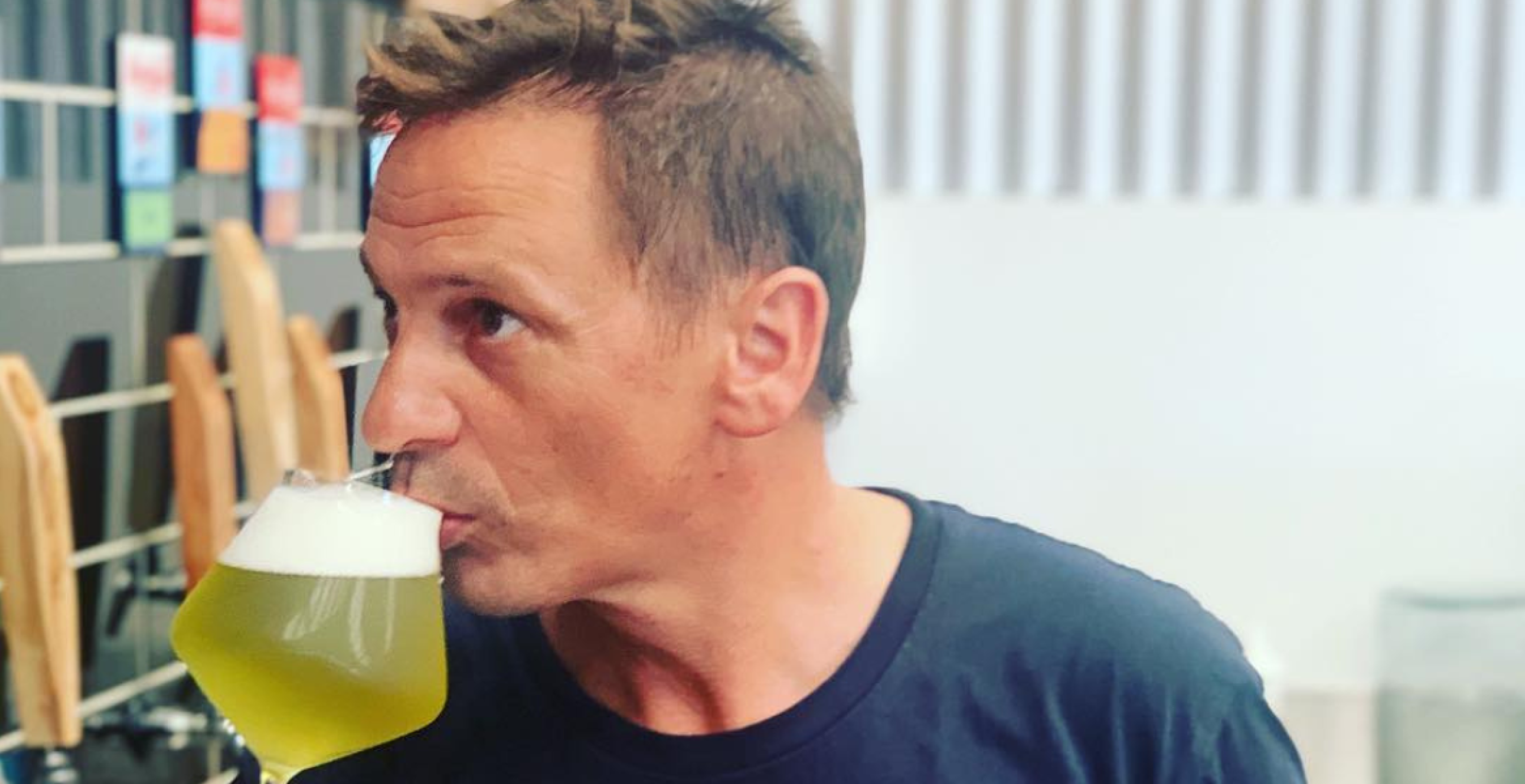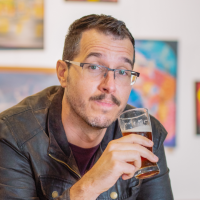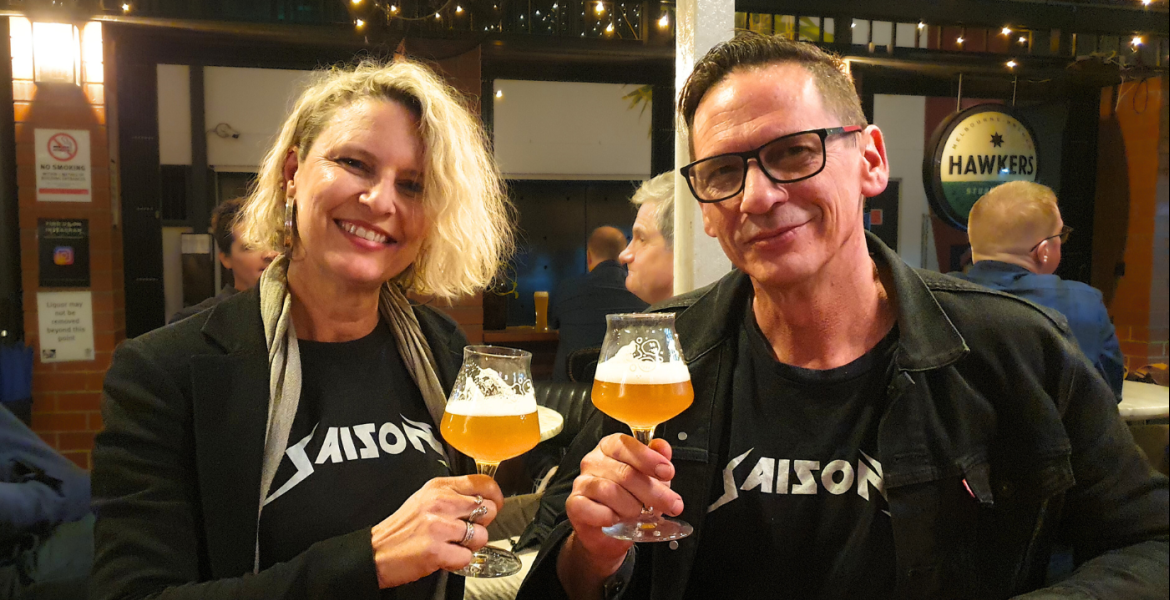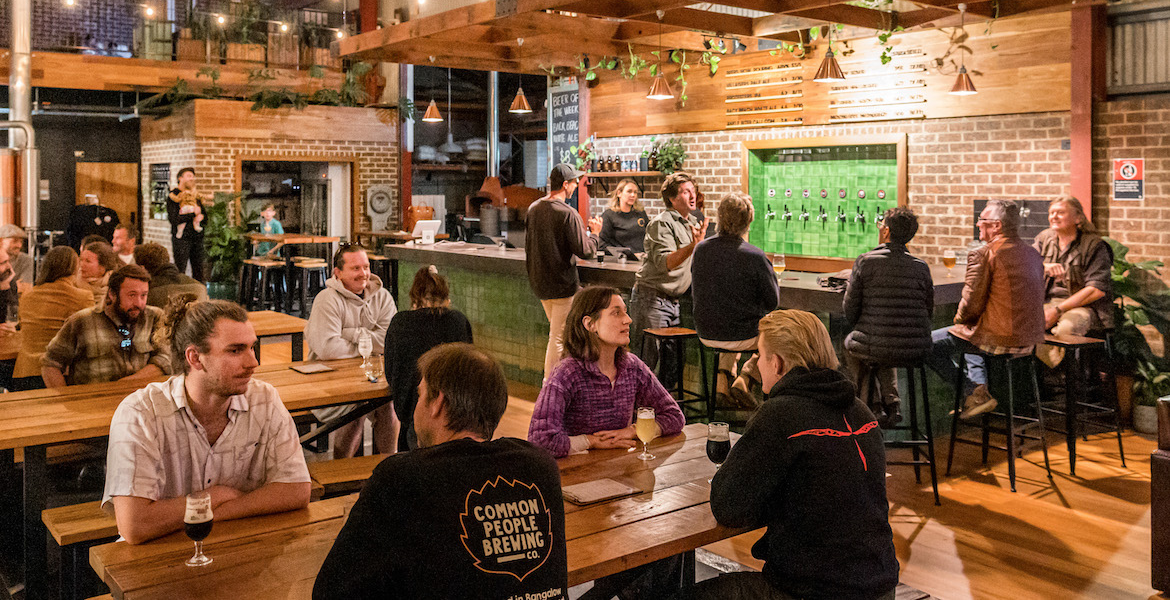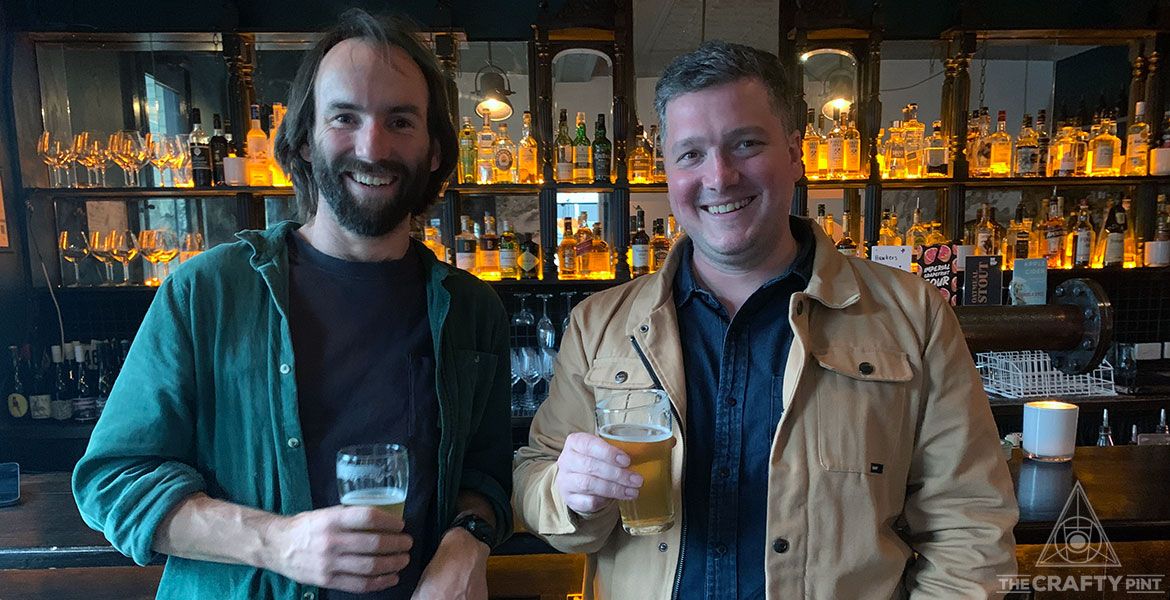Ian Watson is a brewer who can see flavour.
Not sure what I mean? Let me put it another way.
When Ian tastes a beer, he sees colour. I’m not talking about the colour of the beer, but the colour of the flavour. Depending on how a beer tastes, he might see green, or purple, or blue.
Still confused? That’s because Ian has synaesthesia, and trying to describe the experience of synaesthesia to someone who doesn’t have it is like trying to describe colour to someone born blind.
Synaesthesia is a neurological condition where the stimulation of one sense automatically and involuntary stimulates another sense; a kind of cross-wiring in the brain that causes one sense to affect another. Some people get a taste in their mouth when they hear certain words, while others see colours when they hear music. Another form of synaesthesia causes each number and letter to have a particular colour, or even a distinct personality. About 1 in 23 people (4.4 percent of the population) have synaesthesia in one form or another, and it’s common for synaesthetes to experience a combination of these perceptions.
Ian’s synaesthesia takes many forms, but the one that really piqued my interest in his case was that he’s a brewer who sees colours in smells and tastes.
“Music has lots of colour to it,” he says. “Flavour does too.”
When Ian smells or tastes a beer,* he sees a colour – or “the concept of a colour” – and he also gets a sensation of light.
“Let’s say I’m tasting something and it’s orange. It’s not like the world has an orange filter to it or there’s orange in front of my eyes, but more like the experience. The colour is all around me… you’re seeing it, but you’re not seeing it at the same time.
“I might perceive [a certain beer] as green, but there’s also a certain level of light and warmth to that as well… The light has no colour to it, just the level and intensity of it, and the warmth.”
And once – just once – Ian heard a taste, as he was doing a tasting of aged vinegars.
“One of them I tasted, and the world went ‘Bang!’," he says.
“Sound in my ear, colour across my eyes… It was the most intense thing I’ve ever tasted in my life. A sensory overload. That’s the only time a flavour had an auditory impact for me.”
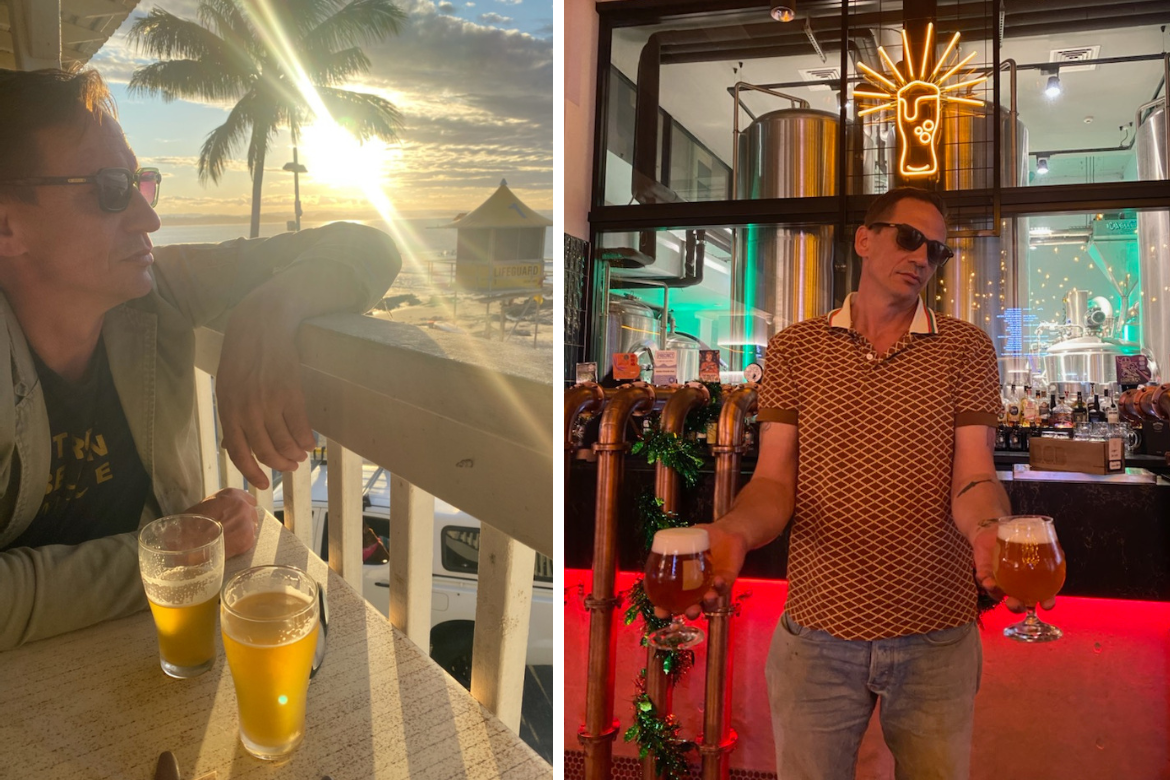
When Ian and I met up for this interview, it was over drinks at Saccharomyces Beer Cafe in South Brisbane. I took the opportunity to interrogate Ian about what he was tasting and seeing in real time.
First we tried Nutz About Stout, a pistachio milk stout by Blasta Brewing.
“It’s really chocolaty, pistachio and almond, a fair bit of almond character. And I’m smelling salt – you can’t smell this, but I’m smelling salt. Probably an associated flavour from the pistachio.”
And then came the magic…
“The colour is straw. [Note that the beer’s actual colour is black.] It’s not yellow, but it’s not brown. Tan, maybe? That’s the colour I’m experiencing. [The light is] dull. Almost sepia. And a low level of warmth. To me, it’s quite soft.”
Next Ian had a pét nat chardonnay by BK Wines.
What Ian tasted: “Quite lemony, little bit sherbety in the mouth. More acidic than most chardonnays; it’s a pét nat, though. Quite zesty, not so much juice.”
As for what Ian "saw": “This is really warm light. It’s yellow, but with pink edges to it. [The wine itself is cloudy yellow.] Hot pink edges. Imagine yellow but around the outside is hot pink that fades into yellow. Brightest in the middle, really lovely and warm and light.”
While Ian is generally quite contemplative and measured, he was waving his arms around as we were talking through these descriptions. I felt like I’d uncaged something by asking him so many questions that no one had asked him before. By the time he got to "pink edges" he started laughing, and laughed his way through the rest of the description of the wine.
“I feel so fucking stupid. It’s absolutely normal to me, but saying it out loud to someone just feels fucking stupid.”

As someone who doesn’t have synaesthesia, I almost have to suspend disbelief as I talk about it. The whole concept is hard to grasp. My wife is a synaesthete, and I’ve hounded her with a thousand questions about how it works for her, but it’s still foreign and fascinating to me. We can’t be inside someone else’s body to see what they see, feel what they feel, taste what they taste.
Ian and I discussed ways people attempt to use one sense to experience or describe another sense. There’s a scene in the 1985 film Mask where the main character describes colours to a blind girl by giving her things to feel; she’s never seen colour before, so he hands her something cold and says: "This is blue," then hands her something hot and says: "This is red." In the 2021 film CODA, the deaf dad loves gangster rap because he can feel the thump of the bass. And this TED talk is by a man with full colourblindness who has a device that translates colours into different musical tones, allowing him to hear colour.
But while there are ways to try to get all this across, language is still a limiting factor in describing a sensory experience to someone.
Ian says: “I could taste four beers and say the word ‘yellow,’ but they’re all specific shades of yellow, or yellowy-orange, or gold, and how it blends across there. And sometimes it can even be colour combinations, where the centre of the colour is this but then the outside is this, and sometimes there can be streams of light through it all.”
As Ian and I spoke, I asked ever more specific questions about things he’d never had to articulate before. He kept searching for ways to explain what he sees and feels. Eventually, he tried using language of saturation and contrast to describe the intensity of the colour and light.
“If [a flavour] is dull, it may have minimal colour. But that doesn’t necessarily mean it’s not good to me… Like how people are generally more attracted to a colour photograph, but a black and white photograph can also be beautiful.”
It’s important to remember that Ian’s sensory experiences aren’t universal among people with synaesthesia. Synaesthetes experience things differently to each other – just like the rest of us do. Haven’t we all thought at some point: “What if what I see as red is different to what you see as red?”
Then personal preference comes into play as well: tickling is pleasurable to some but unbearable to others; some people love bitterness while others can’t stand it; and we all have colours and flavours we like or dislike in certain contexts. For Ian, it’s no different.
“There’s certain colours in beers that I find really appealing,” he says. “And that can be related back to style. There’s a certain shade of blue that I really like in Belgian strong golden ales. But if we were to put this same shade of blue flavour to a stout, I wouldn’t enjoy it. That colour would be the wrong flavour in a stout... it’d indicate a fault in that beer.”
(I showed Ian a few colour charts in an attempt to nail down that shade of Belgian blue. He selected two shades of blue [above] and said it's "somewhere between these two but neither has the correct light intensity...")
When Ian talks about what colours he sees for certain beers, it can be tempting to try to draw a link between the beer or the flavour and the colour he sees. For example, he says Pilsner Urquell is gold and Balter XPA is a shade of yellow (the colours of the liquid?), while Black Hops’ GOAT is white while their Hornet is dark orange (the colours of the packaging?).
But no pattern holds up: Heart of Darkness imperial stout by Murray’s is green “like a Dayglo tennis ball”, Hop Nation’s Build A Bridge NZ IPA is red (“I found that a really nice colour contrast. I don’t get many red IPAs… I mean, IPAs that taste red.”), and Russian River’s Pliny the Elder IIPA is “green in the middle and purple on the outside.”
Ian says that while he’s tried to find explanations for why certain flavours appear as certain colours, there’s usually no rhyme or reason to the connections.
“A really hoppy beer can be green, but it can also be purple, or blue, or red. It could also be orange. If I just went off one beer that tasted green and said ‘green is hoppy,’ that’s not a direct correlation.”
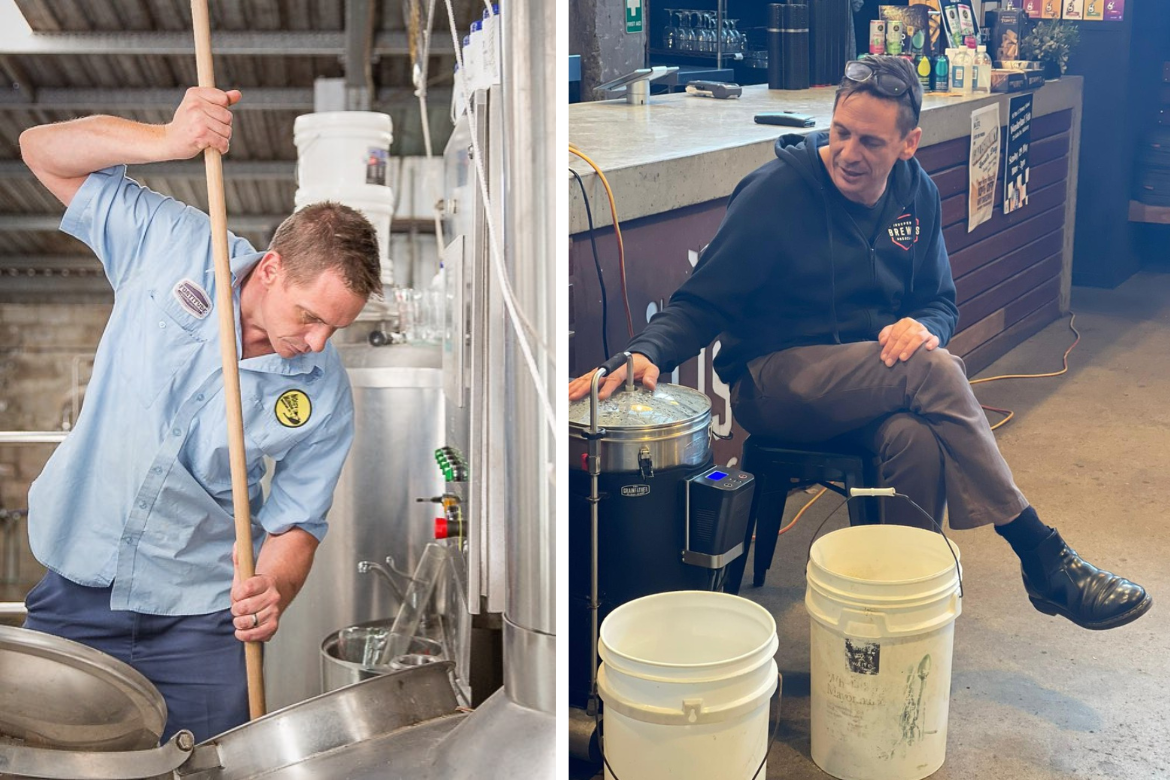
Of course, there’s a lot more to Ian than his synaesthesia.
His career in beverages – which is just entering its third decade – started in wine, and he worked as a sommelier, pushing beer as well as wine, at The Spotted Cow in Toowoomba for a few years in the early 2000s. To this day, matching food with wine and beer is one of Ian’s favourite topics, and he has quite a knack for it.
When it comes to the beer industry, he’s worn a number of hats – bartender, bottleshop attendant, beer consultant, a sales rep, beer writer/speaker/event host – but he’s best known for his considerable time spent in brewing. If you’ve been around Australian craft beer for a while, I’d be surprised if you’ve managed to dodge all the beer Ian’s made. He’s brewed for Sunshine Coast Brewery, Mt Tamborine Brewery, Murray's, Fortitude, Green Beacon, Slipstream, Black Hops and is currently head brewer at Ballistic Beer. The Aussie beer scene has plenty for which to celebrate Ian.
But through these years, there’s never been a day Ian’s colour palate** hasn’t come to bear on the way he approaches beer.
Those of us who don’t have synaesthesia find it strange that some people’s brains work this way. But for people who spend their lives with synaesthesia, there’s nothing strange about it. It’s not like they’ve developed a superpower from falling in radioactive waste.
“It’s just something that’s always been. I don’t really know anything else,” is how Ian puts it.
“It’s not just in taste or flavour; sound and light does the same for me as well. It extends sometimes into concepts too, like numbers and letters: I experience them in colour, and in warmth of colour. It’s always been this way, from when I was a kid learning my ABCs and numbers.
“It wasn’t until becoming an adult and delving more into flavours in food and drink that I realised not everyone feels and experiences it in that way. But to me it’s just normal. It’s just life.”
Ian says one of the realities of having synaesthesia is finding people don't believe you or take what you’re saying seriously. But the flip side is true too: finding someone else with synaesthesia can bring a moment of connection.
“I don’t know what his level of perception of it is, but the first time I ever came across someone that way was judging the Queensland Amateur Brewing Championships about four hundred million years ago with Scotty Hargrave.
“There were some other guys from Canberra up, his homebrewing mates, and one of them laughed about Scotty saying a beer tastes purple. And I was like, ‘You have purple beers too?!’ And he was like, ‘Yeah!’
"We both found that certain hops and flavour profiles in certain IPAs were purple to us.
“And these guys from Canberra were like, ‘Fuck, there’s two of you that are idiots!’.”
I contacted Scotty, who's head brewer at Balter, and yes, he does have synaesthesia and sees colours for aromas and flavours.
“I have been perceiving and describing some hop flavours – especially Simcoe – as purple for years,” says Scotty. “The reason Balter IPA is the purple tinnie is because of how I perceive Simcoe flavour as a colour, and a tribute to the fact that it tastes purple. No shit.”
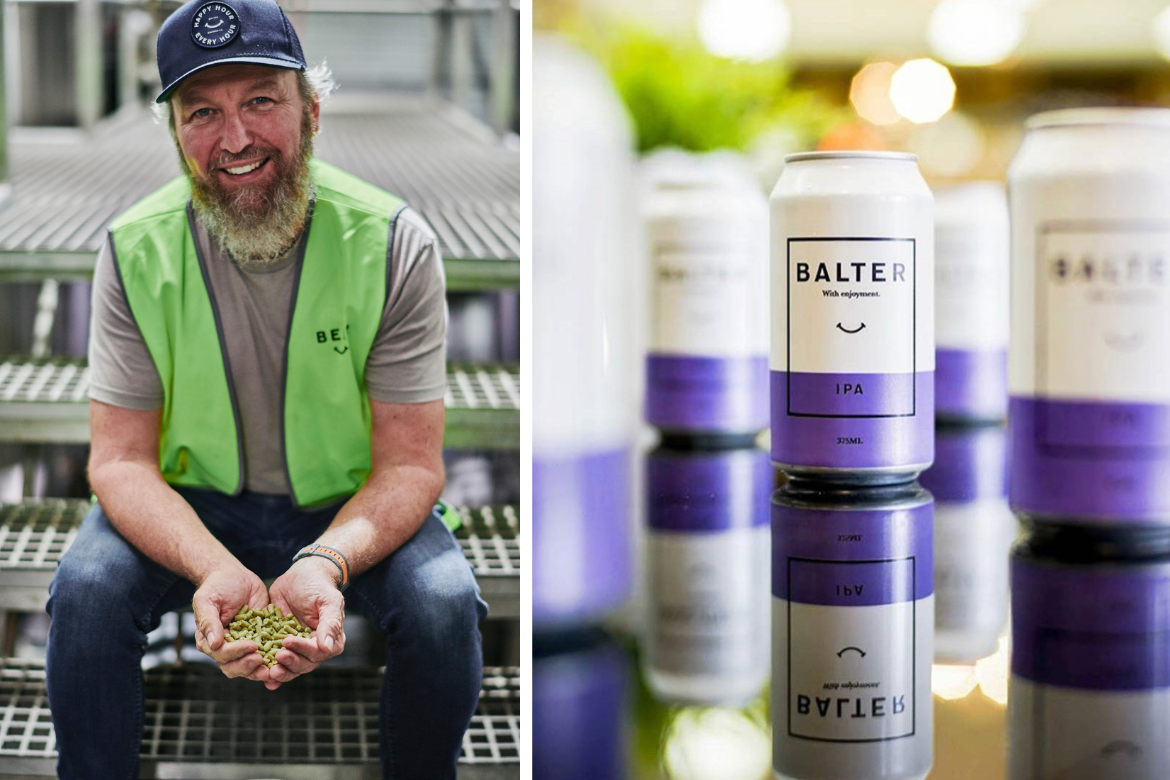
Since it’s always been the lens through which he sees the world, Ian’s synaesthesia is part of what shapes the way he makes beer. While other brewers have their sense of smell and taste to help them create a flavour, Ian also uses his synaesthetic perceptions as a tool for fine-tuning flavours.
“I still taste those flavours everyone else does. But for me there’s another dimension in describing, and particularly in recreating a flavour... [For example,] I can taste that lemony-ness, that sherbety-ness, but I [also] know I’m looking for yellow with hot pink edges that fade into the yellow. If I try to recreate that flavour profile that doesn’t have that, I’m not there yet.”
Sometimes he even uses a colour as a starting point, and works from there.
“I sometimes purposefully try to make a beer taste a certain colour, with certain tones I’m aiming for… just the same as any other brewer is aiming for a flavour profile.
“I’m just working with different tools.”
I asked Ian if his synaesthesia has any downside to it. The only thing he could bring to mind was that it’s sometimes frustrating he can’t share the way he experiences beer with others.
“You can’t say to someone, ‘You’ll love this – it’s purple.’ That’s not the only way I’ll perceive things, but occasionally I’ll let it slip, and get called back to earth pretty quick.”
While some people have extreme synaesthesia and struggle with sensory overloads, Ian doesn’t have that issue; for him, it’s more like seasoning.
“Because mine is technically mild, there’s no downside to it. It’s just part of me. To some people it’s debilitating, but that’s not my experience.”
I must admit, I felt a twinge of jealousy hearing all about Ian’s synaesthesia. I often talk about appreciating beer with all five senses, and I can’t help but feel that Ian has a bonus sense – an extra dimension of appreciating beer.
“I love it. Some of those colours bring me real joy. It can be really beautiful," he says.
“If someone came out with a cure for synaesthesia to help people who were debilitated by it, and someone said to me, ‘Are you interested in taking this drug just to see?’, I’d be like, ‘No fucking way!’
"Maybe the world would be really bland without it!”
*Ian experiences this with all tastes, and also when hearing sounds – particularly music – but for obvious reasons I’m going to mainly focus on his experience smelling and tasting beer.
**I hope at least some of you appreciate this glorious pun.



